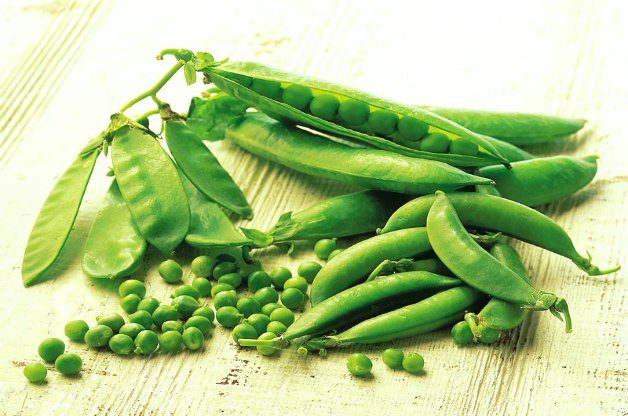Growing Peas
Updated: Apr. 24, 2020

Peas are packed with nutrients and are easy to grow in any backyard.
Ah, the perfectly petite and sphere-shaped pea. This harbinger of spring is just a tease to the garden bounty to come.
Scattered across a bed of crisp salad greens, hiding like emeralds in an Asian stir-fry or lightly steamed and served with a bit of mint, this garden gem is a real palate-pleaser.
A Bounty of Rewards
Peas are a perfect addition to any home garden. Rewards start early in the growing season with snowy white or violet blossoms that sway in spring breezes. Soon to follow are translucent pea pods that mature into ripe veggies in as little as 52 days.
But the pleasure doesn’t stop with picking. The process of shelling peas—the rhythmic movement of the knife as it snips off the tips and zips open the shells to release the rainfall of tumbling green globes— is as relaxing as the tranquility of tending a garden.
One of several early-season vegetables (along with radishes, scallions and beans), peas are a member of the legume family. This means they’re rich in protein, fiber, folic acid and vitamin A, yet low in fat and calories. That’s a nutritional grand slam!
Take Your Pick
In general, peas are categorized by if the pod is edible or not.
Edible-pod varieties are commonly called “Chinese pod peas,” which include popular snap peas and snow peas. These fully edible pods are often used to brighten up stirfrys, served raw in relish trays and tossed into green salads.
Green peas, garden peas and English peas are grown for the seeds only, because their tough pods are not edible. Inside, however, are green rounded pea seeds that are sweet and starchy in taste. These types of peas are often cooked and served as a side dish on their own or can be added to perk up pasta salads.
Pea plants are usually planted in late winter in warmer regions and in early spring in northern climates, to harvest before heat of summer. Or plant in midsummer to late summer for a fall harvest.
Plant peas when the soil temperature is at least 45 degrees and dry enough to till without clumping. Early-season peas need a winter covering to protect them from killing frost (although most are tough enough to tolerate moderate freezes).
One inexpensive trick is to cover them with clear plastic soda bottles with the bottoms and caps removed (for ventilation). You can also try bell-shaped glass covers to protect them from killing frost.
Pea-Pickin’ Time
Once the peas are ready to pick, harvest them regularly to encourage greater productivity. Pick inedible shell varieties when the pods are plump but not fully grown. If the pods wrinkle at the stem, you’re too late. Snow peas should be picked when flat.
To prepare peas for cooking, rinse and remove the stem tips from all varieties. Removing the shells’ strings is optional for sugar snap and snow peas, and all varieties with inedible pods should be shelled before cooking.
Steam lightly or blanch and serve cold in salads. Peas can also be frozen, after blanching for 2 minutes for shelled peas and 5 minutes for ones still in pod. Chill in an ice bath before freezing.
For maximum sweetness, cook peas immediately after picking. Up to 40 percent of the sugar in fresh peas will convert to starch in a few hours, even when refrigerated.
If necessary, you can refrigerate unwashed pea pods in perforated bags for a few days, with the edible-pod varieties lasting a bit longer.
